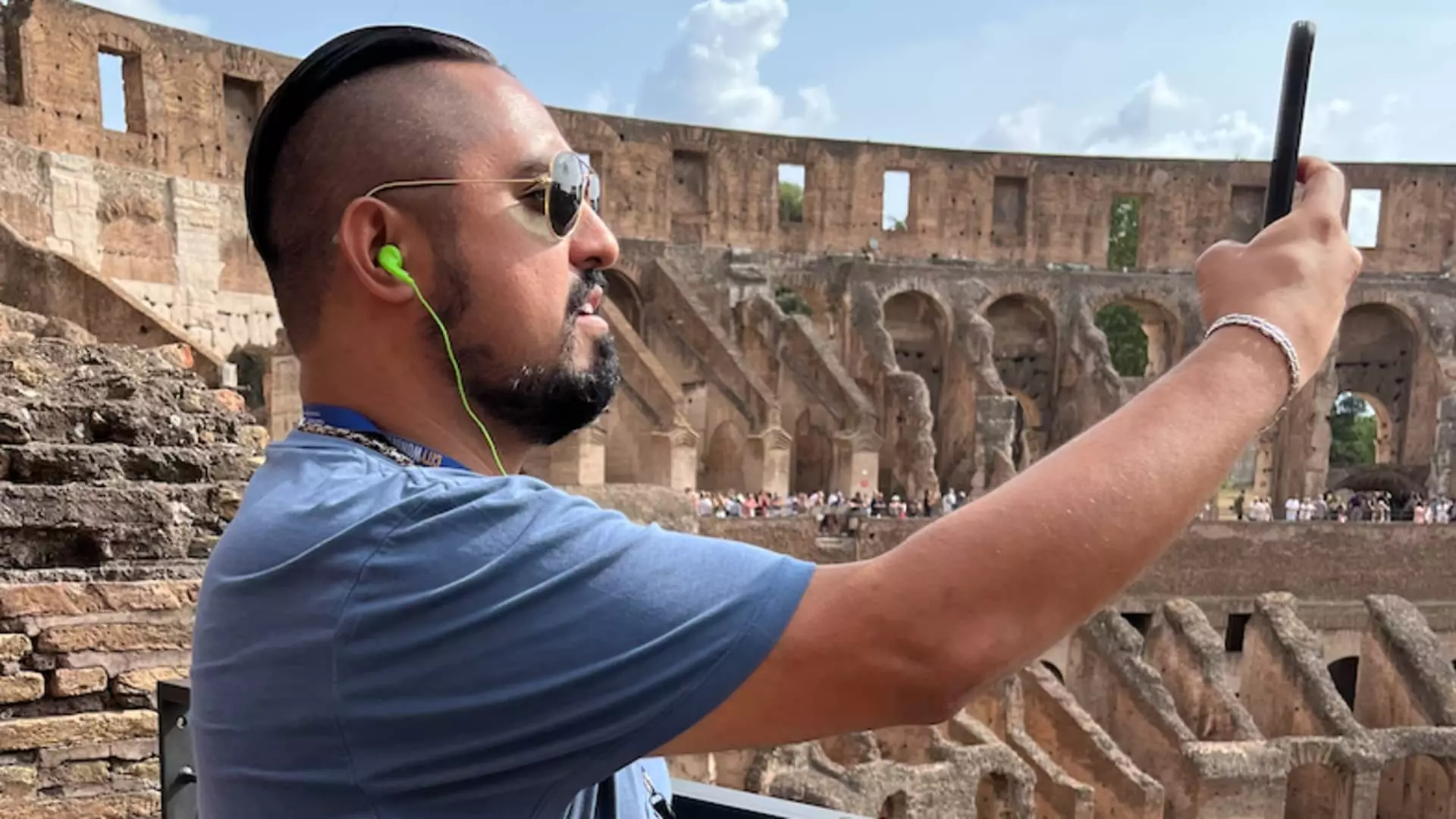Rome stands as a timeless testament to human ingenuity, a city where every corner tells a story woven with threads of history, art, and architectural marvels. One shining example of this artistic legacy is the Pantheon, a structure that has captivated visitors for centuries. However, in the digital age, exploring such wonders has taken on a new dimension, thanks to tools like ChatGPT, an artificial intelligence that has redefined how we engage with information and take part in cultural exploration.
As I embarked on an unforgettable journey through Rome with my mother, who was celebrating her 60th birthday, the city’s ancient grandeur seemed to echo the significance of the occasion. Our itinerary included iconic sites and lesser-known treasures, each stop enhanced by the stories behind them. Waiting in the sweltering heat outside the Pantheon, anticipation bubbled within us as I decided to harness the power of ChatGPT to enrich our experience.
Utilizing artificial intelligence may have seemed unconventional at first, but a quick inquiry transformed our mundane wait into an interactive adventure. “Tell me about the Pantheon in Rome,”I said, expecting a mere summary. Instead, I received a bland list of facts that did little to spark excitement. Adjusting my approach, I prompted the AI to play the role of a lively tour guide. What followed was a spirited narrative that merged historical accuracy with vivid storytelling, deeply enhancing our appreciation of the site.
ChatGPT greeted us as “Chef,” a nickname I had whimsically assigned during our trip, a move that instantly warmed the interaction. The AI painted a vivid picture, encouraging us to imagine the temple’s original purpose dedicated to the gods and its transformation over the ages. “Look up,” it urged, drawing our attention to the famed dome, the largest unreinforced concrete dome ever constructed. Such a description transported us back in time, allowing us to visualize the hands that built this incredible structure almost 2,000 years prior.
ChatGPT’s commentary rivaled that of traditional audio guides but presented in a more engaging and narrative-driven manner. It seamlessly combined factual knowledge with an emotional pull, making the experience rich and memorable. My mother and I found ourselves captivated, hanging on every word as we prepared to step inside the architectural marvel.
Despite the charm that AI brought to our exploration, it was obvious that the human touch remains irreplaceable. During our travels around Italy, we also relied on local guides who brought vitality and expertise that no machine could replicate. Take our Vatican City guide, for instance, who deftly led us through bustling crowds and around historical art pieces, preparing us for the awe-inspiring Sistine Chapel. This interplay between human expertise and machine assistance sculpted an experience that was well-rounded and enriching.
Moreover, our guides had opportunities to engage with the environment in ways that AI couldn’t. They whisked us through hidden corners and brought history alive through anecdotes, such as the poignant story of Julius Caesar’s cremation site. This blend of guided tours and spontaneous discoveries, aided occasionally by our digital partner, created a satisfying balance that catered to both the informative and the experiential aspects of our journey.
Venturing beyond popular attractions, we stumbled upon lesser-known sites such as the Santa Maria sopra Minerva, a Gothic church with a wealth of artistic treasures. Here, I consulted ChatGPT again, desiring insights that would elevate our visit. In seconds, the AI unveiled the church’s significance, including Michelangelo’s enchanting Christ the Redeemer sculpture that stood just to our left. This sort of on-the-spot guidance transformed what could have been a simple visit into an enlightening encounter with artistry and history.
In that moment, I was struck by the capabilities of AI, and how it could augment human experiences in such a meaningful way. For every busy tourist spot where throngs of people jostled for views, choosing to connect with ChatGPT allowed us to delve deeper into the stories that many visitors may overlook.
Our seven-city journey through Italy underscored the juxtaposition of tradition and technology. While human guides enriched our experience with their relatability, ChatGPT provided an accessible reservoir of knowledge poised at our fingertips. In an era where the human experience is often augmented by technology, embracing tools like AI can significantly enhance our exploration of cultural heritage. As we strolled away from the Pantheon, both my mother and I couldn’t help but admire the seamless blend of past and future, where ancient civilization and modern technology embark on a collaborative journey of discovery in an ever-evolving world.

